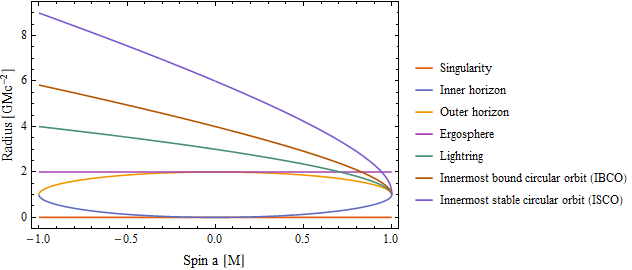I'm trying to find out how a Kerr-type black hole is structured (that is, a black hole with non-zero angular momentum but no net electrical charge). According to the information I have found, the order in which its layers are located would be this, from outside to inside:
- The accretion disk
- The innermost stable circular orbit
- The photon sphere
- The outer event horizon
- The inner event horizon or Cauchy horizon
- The singularity
Is this scheme correct or is something missing? Where would then the ergosphere be placed in the list? Are the innermost stable circular orbit and the photon sphere at the same distance from the centre of the black hole?

